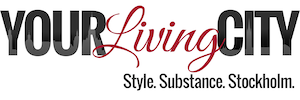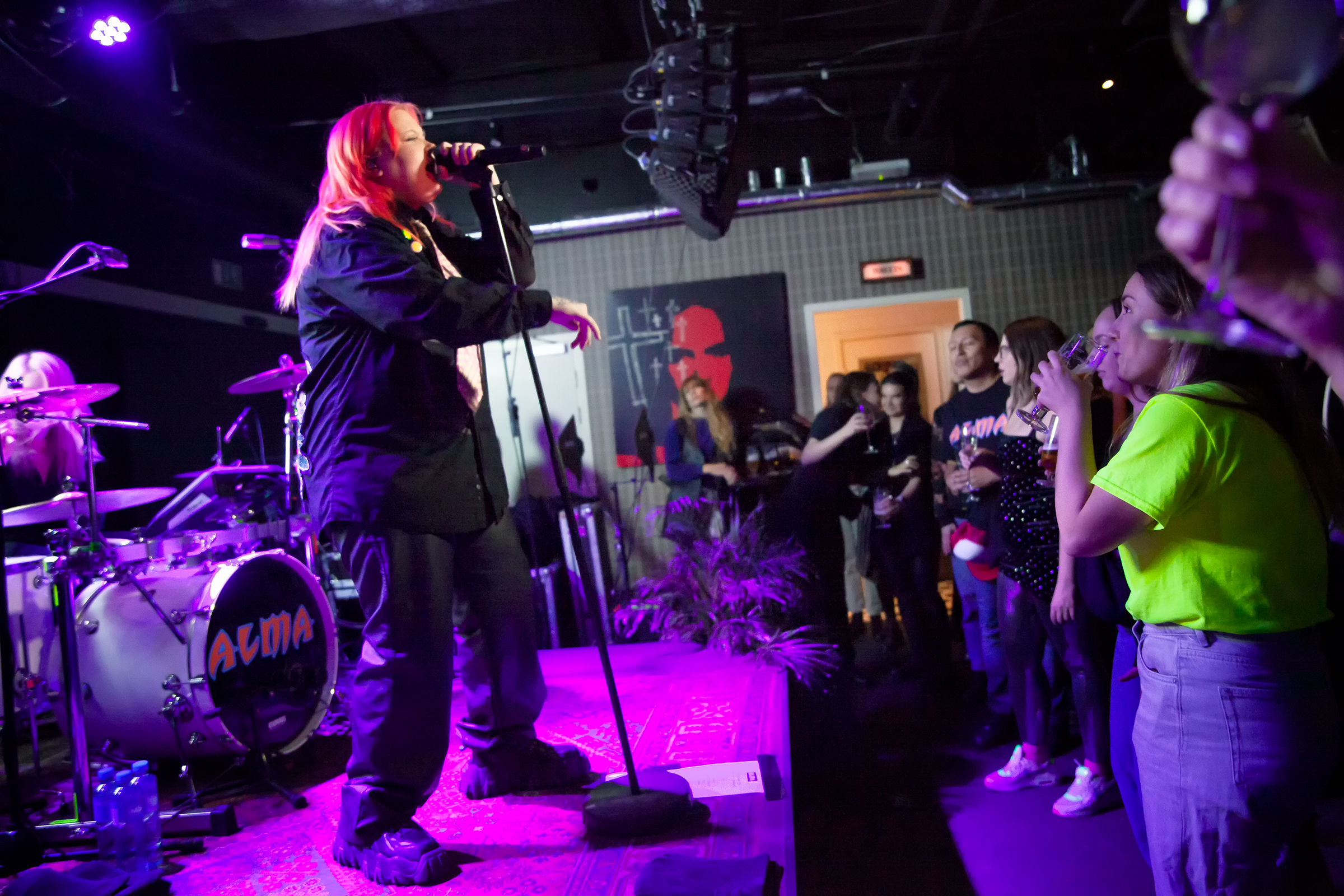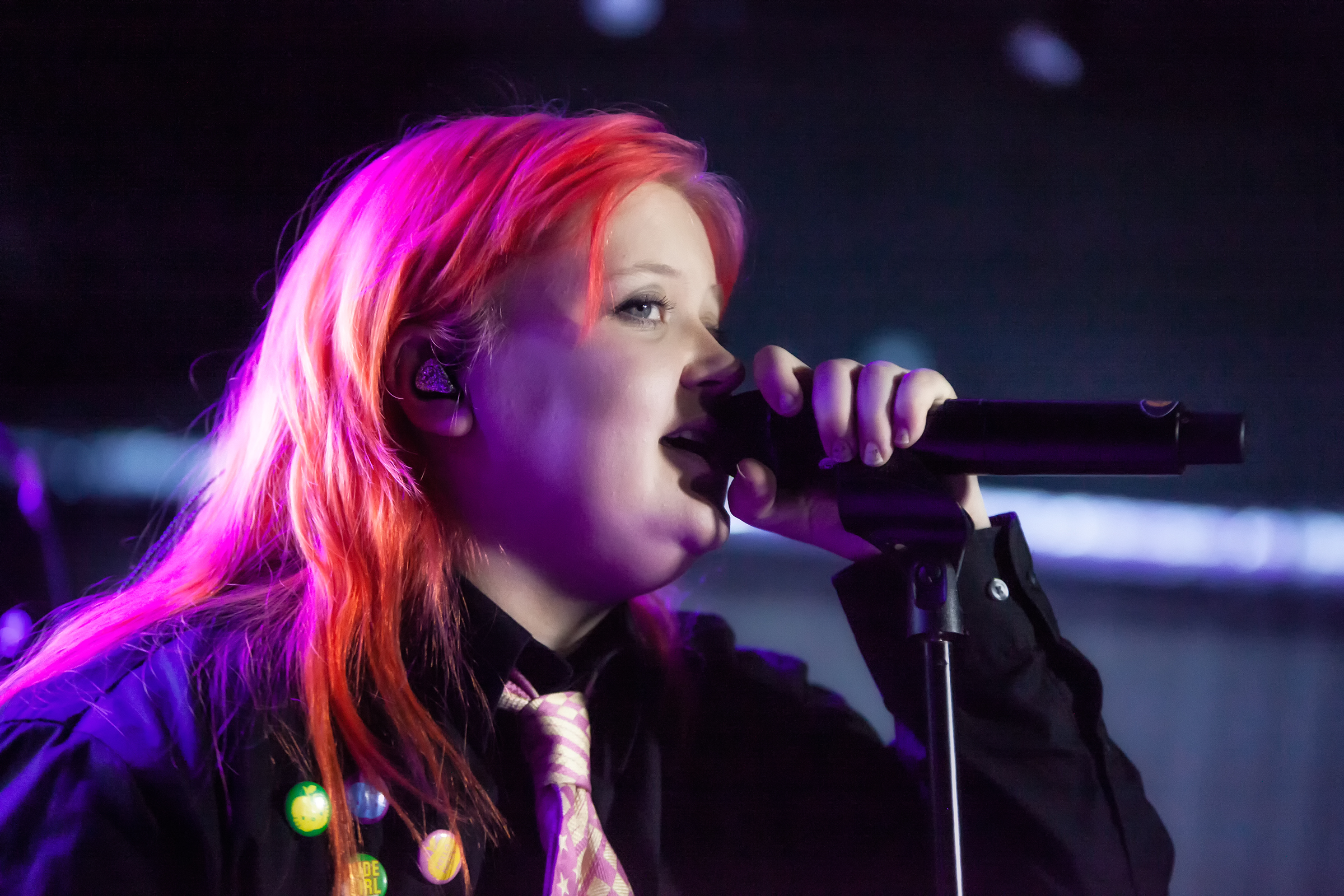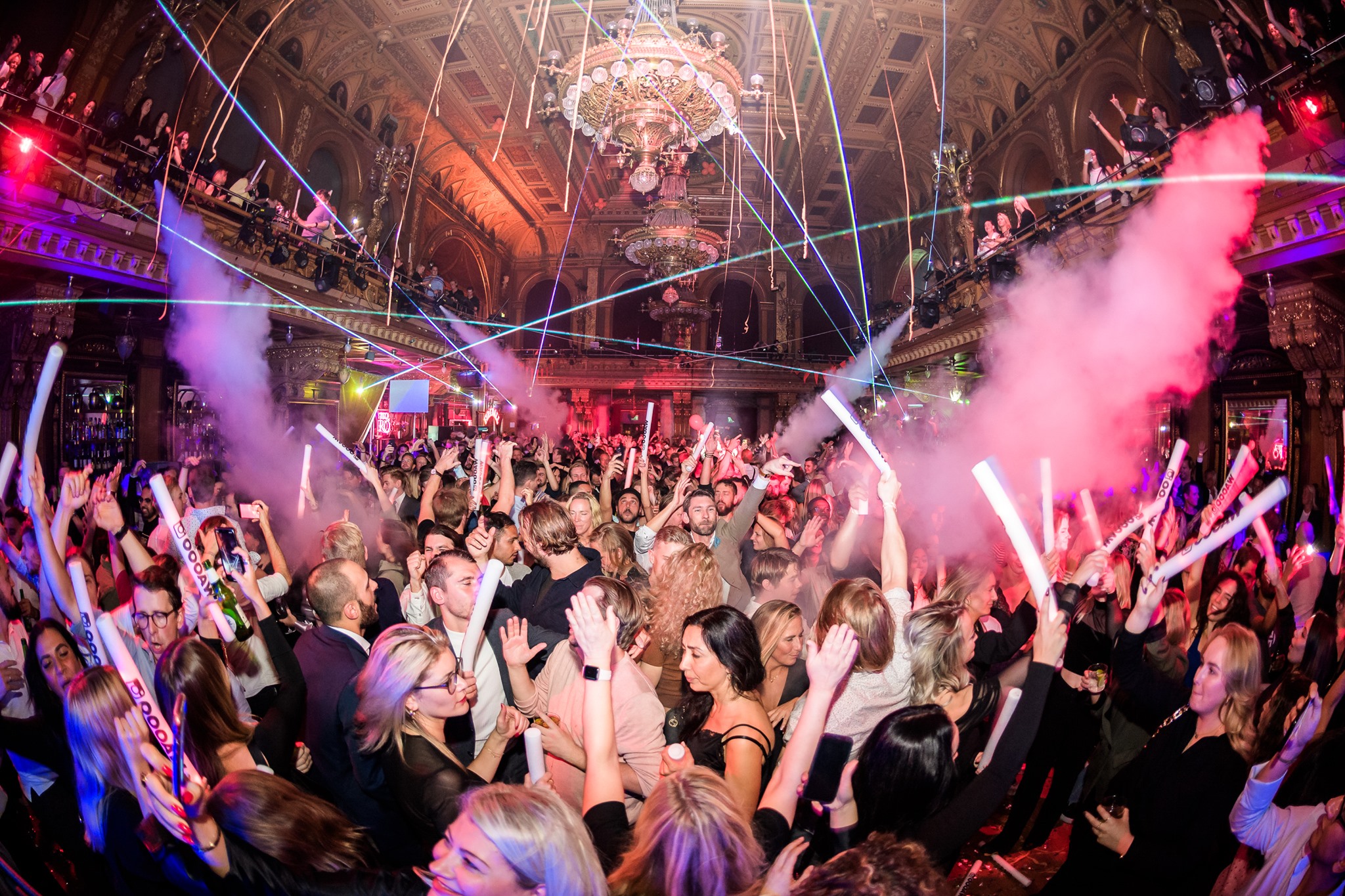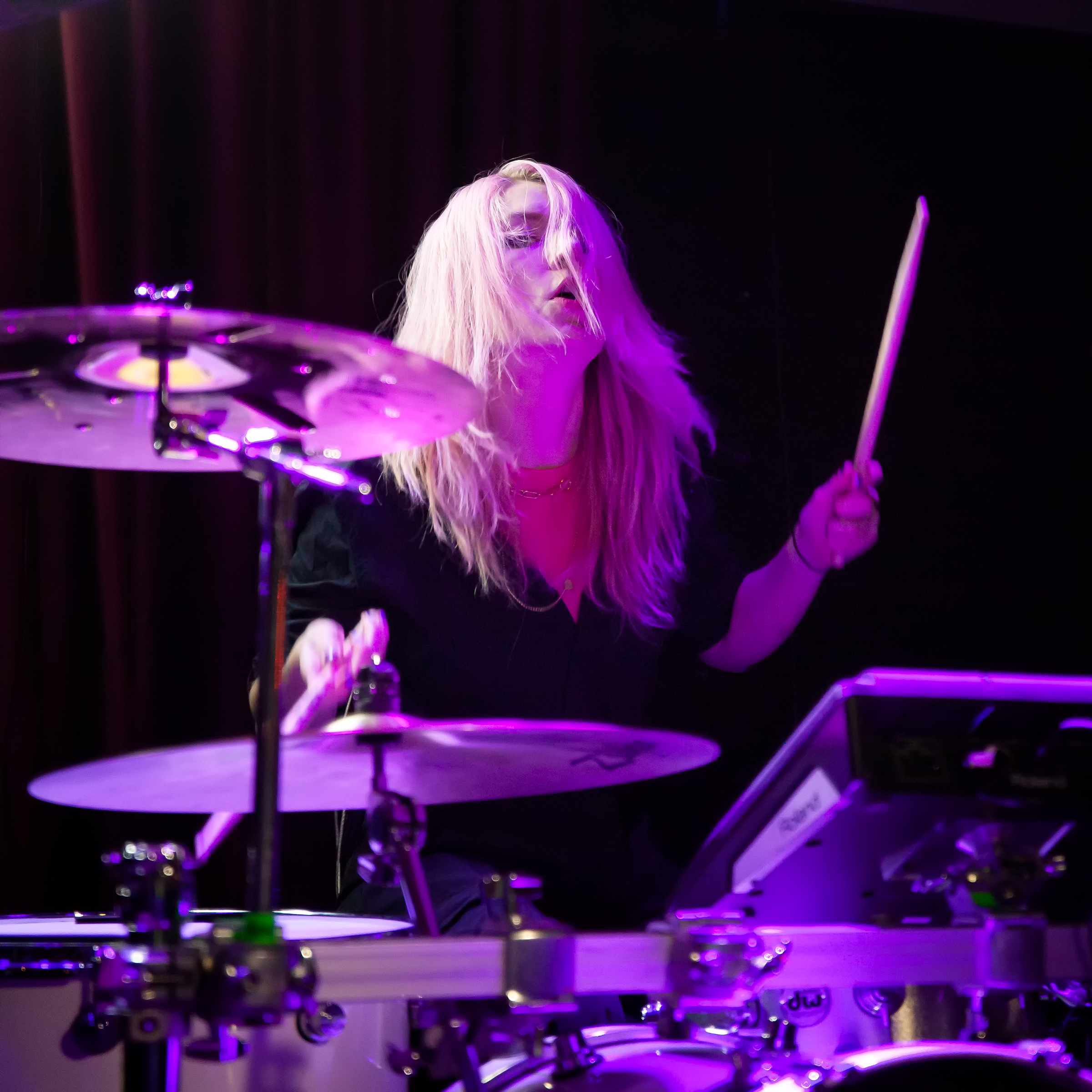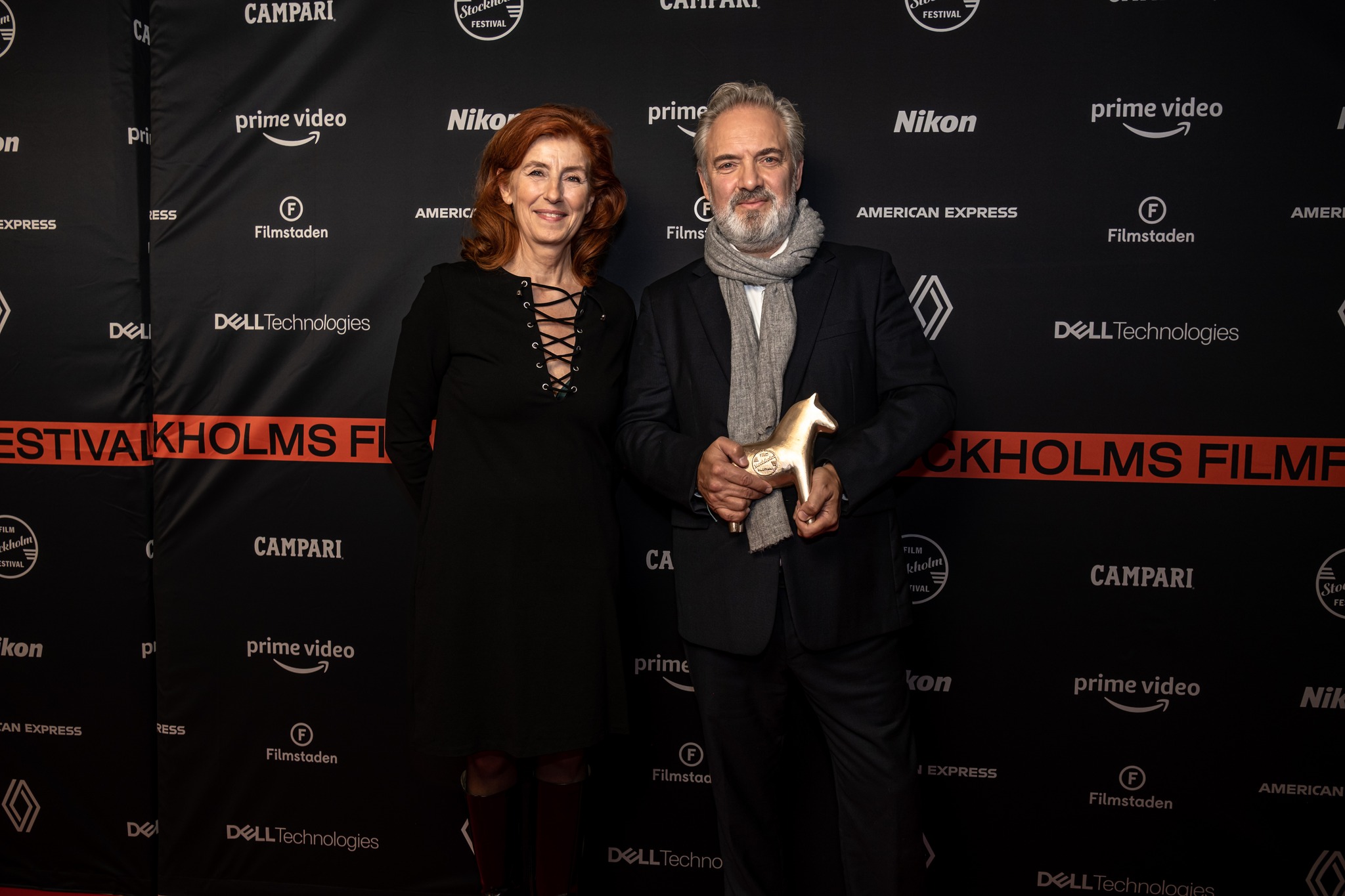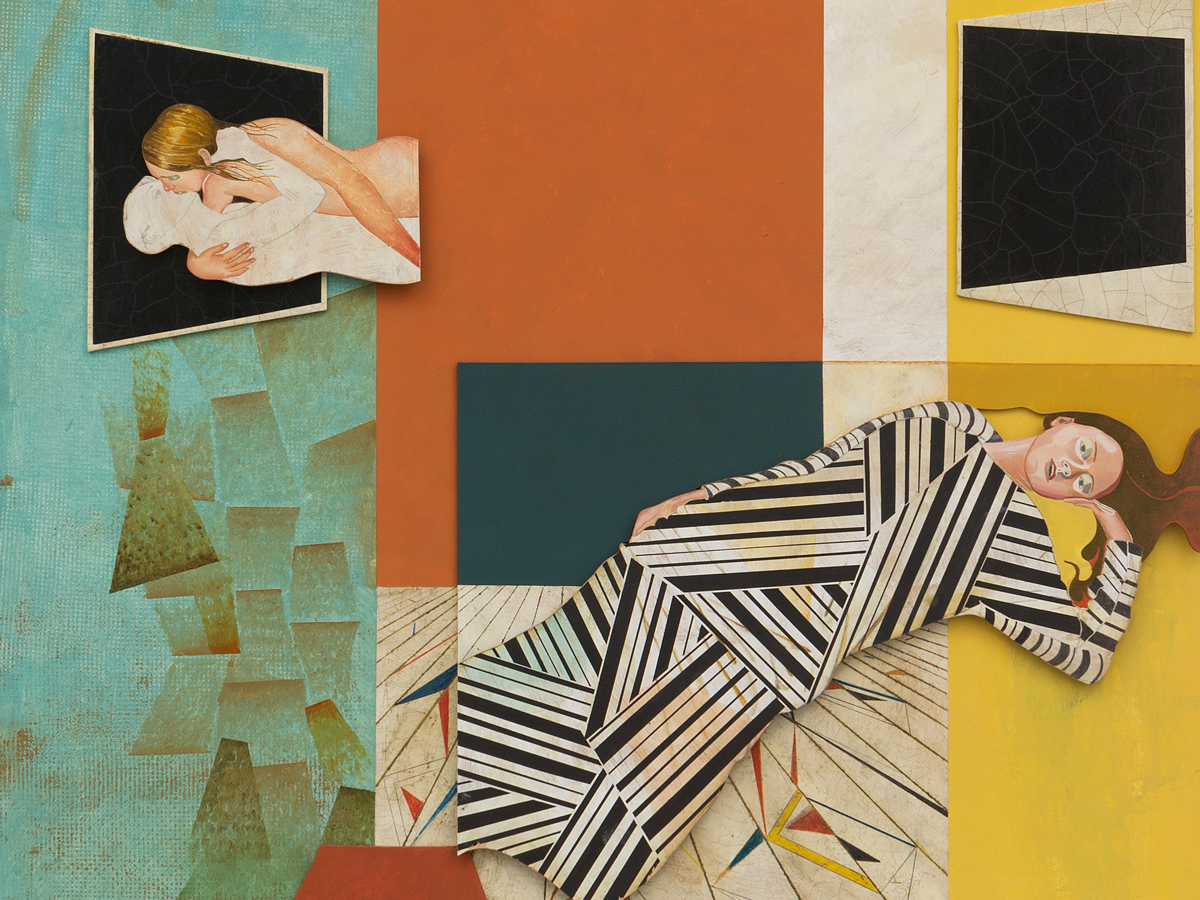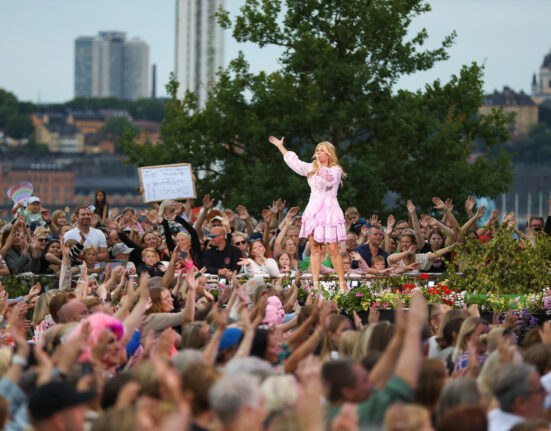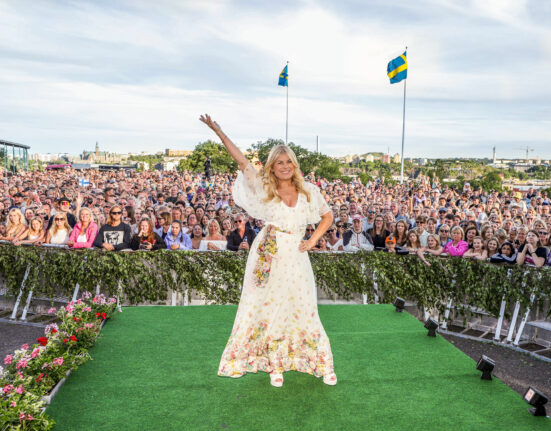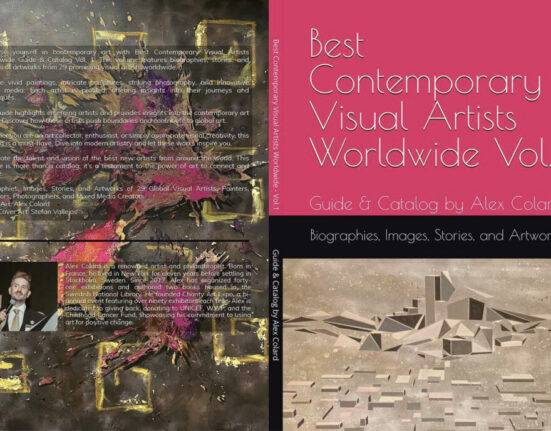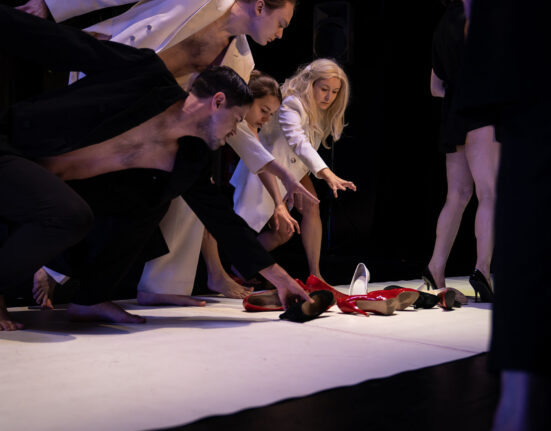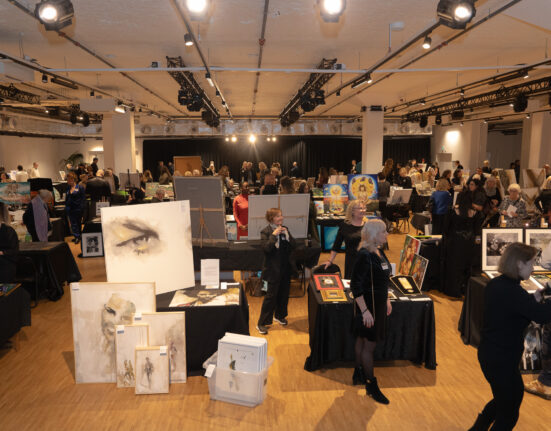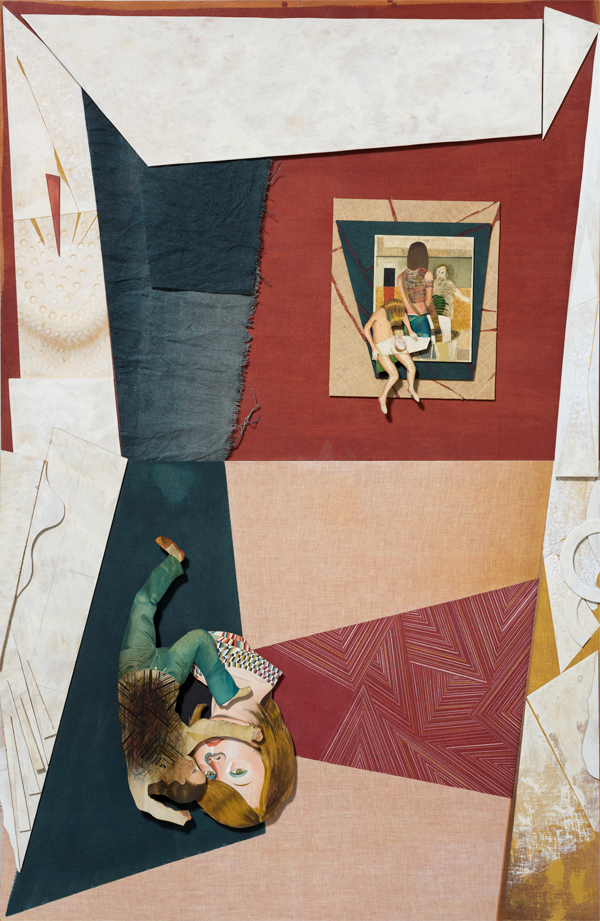
As Stockholm gears up for Valentine’s Day, Your Living City recommends a string of art exhibitions to attend with the new love of your life post the first flush of euphoria experienced during 14th February…
…especially when the selected art shows let you naturally discover the potential love of your life’s childhood memories, cherished dreams, flights of fantasy and Eros, depths of infatuation with nature and folklore, views on the world today and its possibilities of change, as well as imagined future aspired.
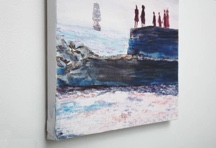
Exhibition: The Great Escape
Artist: Sofie Proos
Where: Stene Projects Gallery, Brunnsgatan 21B
When: Till 17 February
A series of paintings thematising existential flight, each contains its own interpretation of what it could mean to escape life and distance oneself from reality. Among the motifs are a solitary cottage in the woods and a ship departing from a shore; along with more subtle images of alienation from reality: like an audience at the theatre, a stage at the opera, or an old reading chair perfect for fleeing into a good book.
Proos’ characteristic technique of using thin layers of oil to create beautiful resulting light and luminous dream-like images that spark imagination makes her works easily recognisable. Yet the literary influences in her works are far from obvious. Although some of the motifs appear to be illustrations from a romantic 18th century novel.
Today, the romantic era is often regarded as the ultimate withdrawal from reality into a fictionalized and aestheticized world. Ironically, the aim of the romantic turn towards nature and emotion was, in fact, to get closer to the natural world; as an escape from the increasingly rationalized lived in world.
This also applies to Proos’ great escape. In distancing herself from this world, escaping into artistic practices and alternative universes, she reconnects with another that is lost in the colloquial – an inner world: unique and at the same time belonging to everyone.
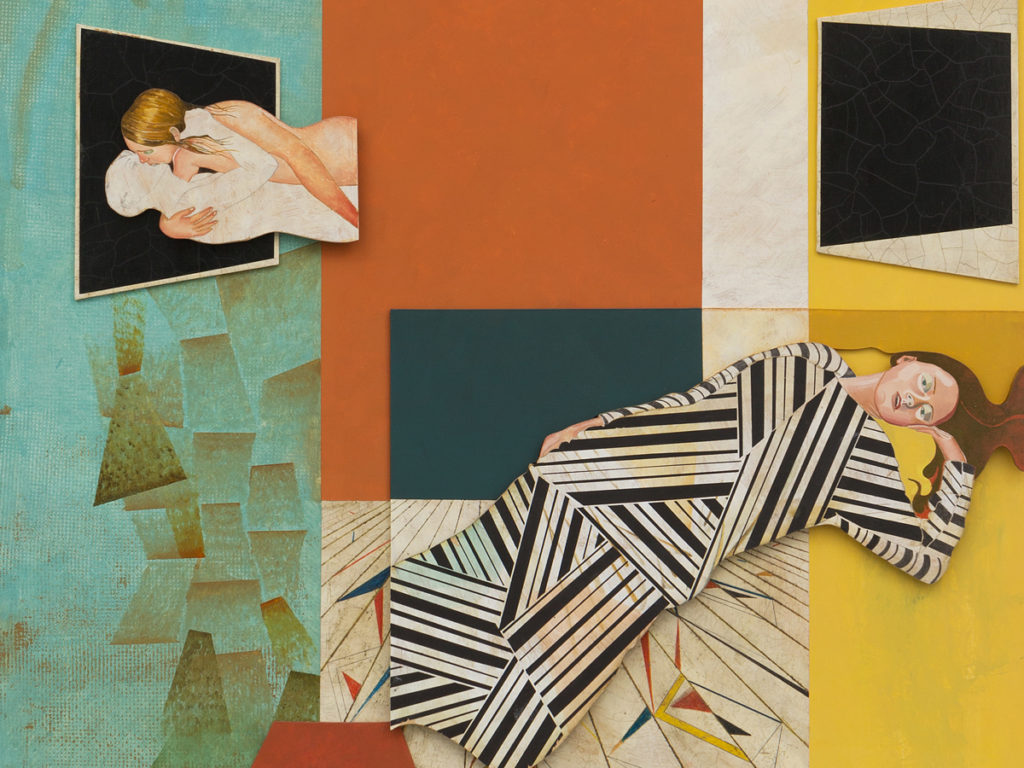
Exhibition: Drömmarna (The Dreams)
Artist: Jens Fänge
Where: Bonniers Konsthall, Torsgatan 19
When: Till 1 April
Working with painting and assemblage, Jens Fänge has occupied a central position in the Swedish art world for quite some time and has received international attention of late. And Drömmarna characterises his inclination to allow his paintings to extend beyond the canvas into the room; challenging and playing with Bonniers Konsthall’s architecture.
The exhibition also includes a number of earlier pieces, the oldest dating back to 1996, when Fänge first arrived on the scene with paintings populated by surrealistic imagery, often referencing popular culture and pop art.
His paintings usually depict a dreamlike or frozen moment in time fortified as figures and objects reappear and evolve; with a certain character in the same position in various contexts, or the same geometric pattern represented in different materials to deliberately shift the object’s meaning and function.
More recently Fänge has delved into the realm of assemblage, a 3-D collage technique in which he uses textiles, paint, wood, and found objects to encroach into the room. Wallpaper with references to mural paintings creates backdrops onto which the works and sometimes found objects are placed. A shifting imagery emerges, with the artworks entering and exiting one another.
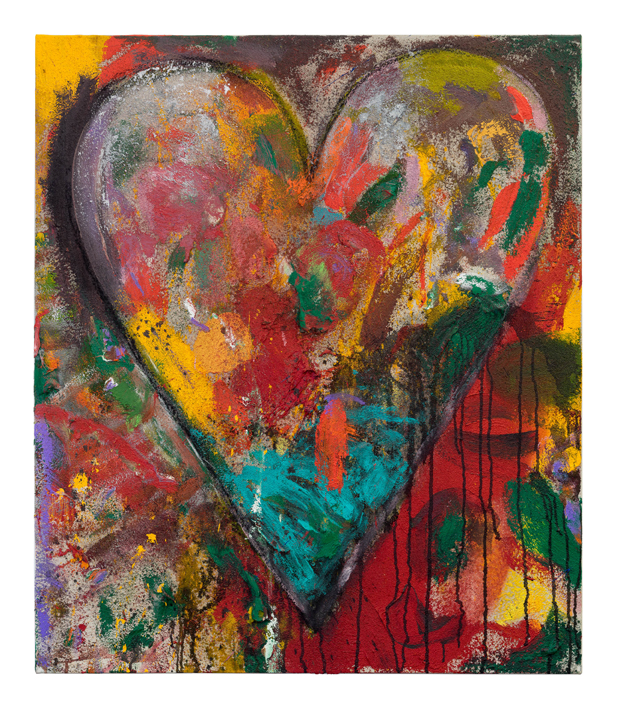
Exhibition & Artist: Jim Dine
Where: Wetterling Gallery, Kungsträdgården 3
When: Till 17 March
One of the most renowned and consistently innovative artists to have emerged in the second half of the twentieth century, and with an association with the inception of Pop-Art in the 1960s, Jim Dine’s well known imageries of The Heart, Pinocchio and Venus from Milo have followed him through the years; being his constant source of inspiration in finding new ways of expression and meaning.
The heart becomes a frame to explore texture’s relationship with colour and composition. Pinocchio, as a metaphor for art, dwells on creating something living from a piece of wood or a flat empty canvas; while Venus lets him reinvent an archetype symbol.
Dine’s work concurrently reveals a characteristic interplay between actual and painted objects, where everyday items; like tools, rope, neckties and even a kitchen sink; are anchored to his canvases; making them the ultimate manifestation of “unreality”, with his found objects, conversely, the embodiment of what is real.
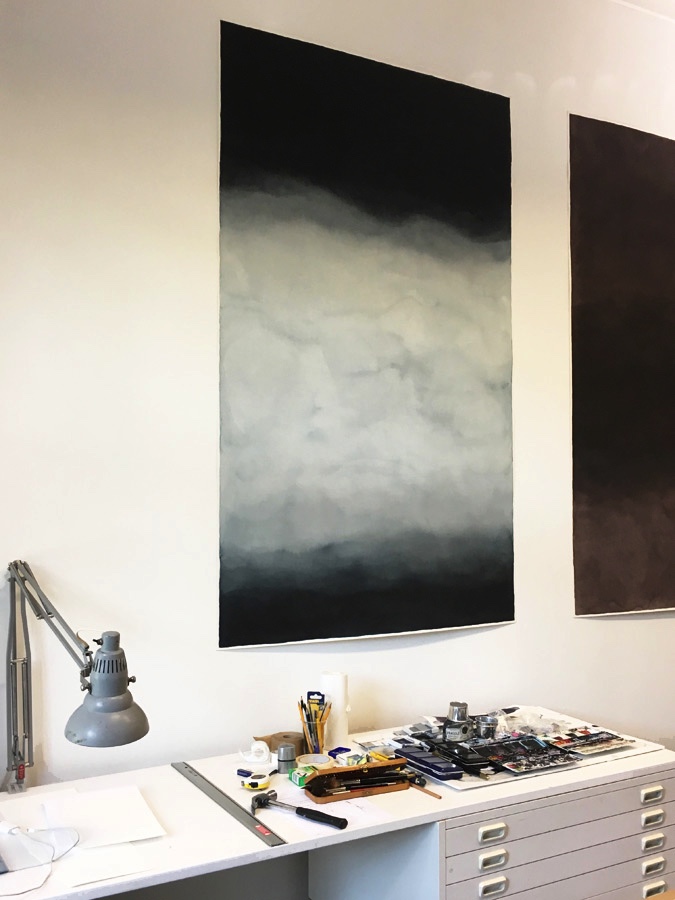
Exhibition: i övergång resonans
Artist: Leif Palmquist
Where: Galleri Charlotte Lund, Johannes plan 5
When: Till 10 March
Leif Palmquist’s watercolour on paper are abstract shapes and patterns referencing the cosmos or conjuring sound and light. While his work has often comprised of several parts, in i övergång resonans he has palpably increased their scale by painting with rainwater from the different locations where they have fallen.
With sombre colours shifting from light to darkness, the paintings are like pictures in transition of processes or of transitions in nature: “as the light of dusk transitions to darkness; as… life [proceeds through] the seasons; as… atmospheric vapour[transitions] to crystalline ice; [and]… sound to a vacuous silence.”
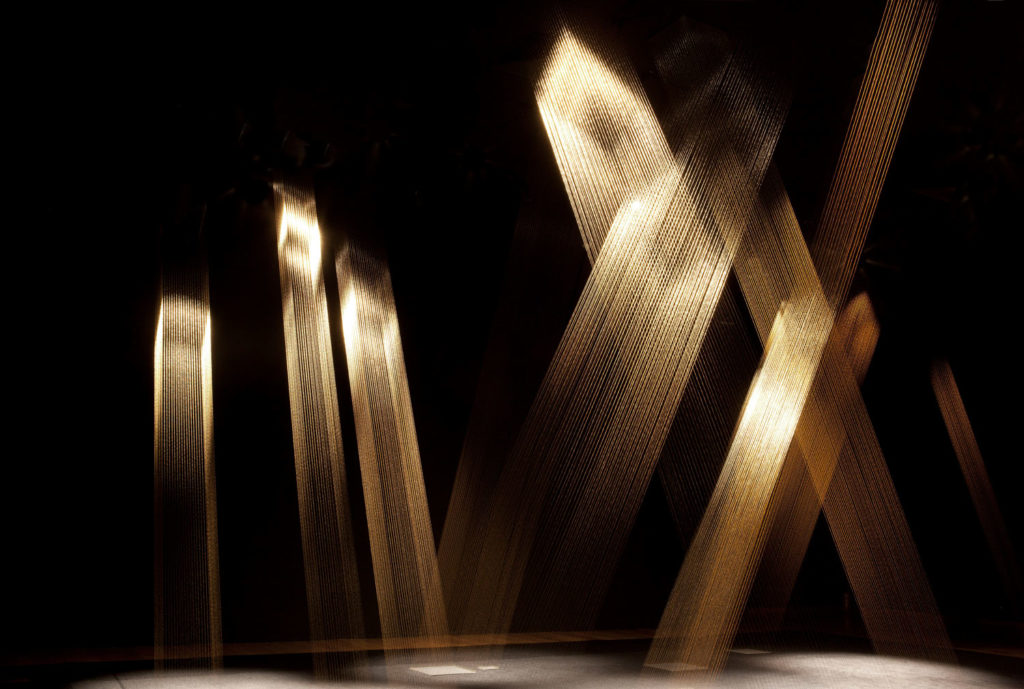
Where: Moderna Museet , Skeppsholmen
Exhibition A: Ttéia 1,C
Artist: Lygia Pape
When: Till 13 May
A protagonist of the concrete and neo-concrete movements in Brazil, Lygia Pape (1927–2004) has had an undeniable impact on the development of conceptual and non-figurative art.
His installation Ttéia 1,C, with shimmering threads carefully strung from ceiling to floor into geometric shapes, is connected to his longstanding interest in liberating the artwork from a static form. A Portuguese pun on teia (web) and teteia (something or someone of grace), the title is an apt description of an experiment with architecturally installed wire interventions began in 1978 that have taken many forms since; created in dialogue with the individual’s embodied engagement.
As Pape said, “Because to me, art is a way of knowing the world… of seeing what the world is like… of getting to know the world.”
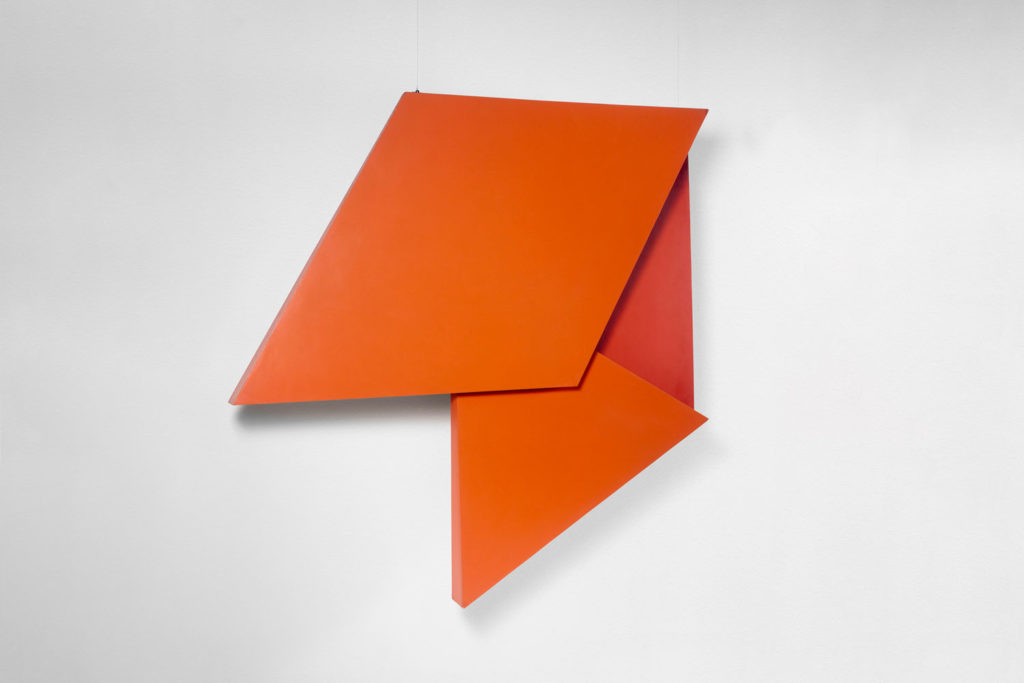
Exhibition B: Concrete Matters
Artists: Geraldo de Barros, Max Bill, Aluísio Carvão, Willys de Castro, Lygia Clark, Waldemar Cordeiro, Carlos Cruz-Diez, Gego, Gyula Kosice, Judith Lauand, Raúl Lozza, Tomás Maldonado, Juan Melé, Juan Alberto Molenberg, Hélio Oiticica, Alejandro Otero, Lygia Pape, Rhod Rothfuss, Luíz Sacilotto, Mira Schendel, Ivan Serpa, Jésus Rafael Soto, Joaquín Torres-García, Rubem Valentim, Franz Weissmann, & Anatol Władysław.
When: 24 February to 13 May
Concrete Matters highlights the seminal period from the mid-1930s to the 1970s when Latin American artists were exploring the boundaries of Concretism, and of art itself; and when the emerging Brazilian Neo-Concrete movement in the 1950s challenged the notion of the work of art as a static object.
The featured 80 works from Argentina, Brazil, Uruguay and Venezuela reflect the Inventionist Manifesto (Manifiesto invencionista) signed by 16 artists in Buenos Aires in 1946, with an introduction that states: “The age of representational fiction in art has come to an end. Man is less and less sensitive to illusory images. (…) The old phantasmagorias no longer satisfy the aesthetic appetite of the new man, formed in a reality that demands of him his total presence, without reservations.”
The term “concrete art” was coined in 1930 by the Dutch artist Theo van Doesburg when he formed the group Art Concret in Paris. This group existed for only a short time, but its vision of a universal imagery based on geometric shapes spread across Europe, and was interpreted and developed in the ensuing decades by artists on the South American continent at a time characterised by optimism, enormous social change, a booming economy, growing cities and modernist buildings as emblems of a new era; despite political instability and periods of authoritarianism.
“Both the forms and intentions of Concretism were developed and reformulated by the Latin American artists. For many of them, this was a language with universal potential that was in line with their radical and occasionally utopian ideas for a new society,” says Matilda Olof-Ors, the exhibition’s curator.
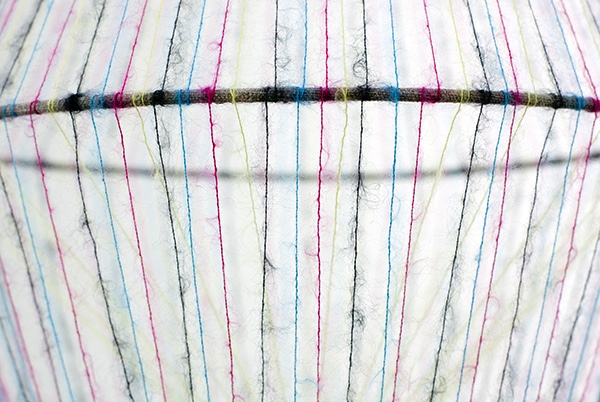
Exhibition: Soon Enough: Art in Action
Artists: Alma Heikkilä (Helsinki), Amol Patil (Mumbai), Ane Graff (Oslo), Ann Lislegaard (Copehagen), Anne Low (Vancouver), Bella Rune (Stockholm), Christian Nyampeta (Kigali/Amsterdam/New York), Dale Harding (Brisbane), Faivovic & Goldberg (Buenos Aires), Flo Kasearu (Tallinn), Forensic Architecture (London), Ingela Ihrman (Malmö), Jillian Mayer (Miami), Joar Nango (Tromsö), Kultivator (Öland), k.ö.k. (Stockholm), Marie Kølbæk Iversen (Copenhagen), Matts Leiderstam (Stockholm), Osías Yanov (Buenos Aires), Pauline Boudry & Renate Lorenz (Berlin), Sorawit Songsataya (Auckland), Suki Seokyeong Kang (Seoul), Taus Makhacheva (Makhachala), Yu Ji (Shanghai), Zach Blas (London), & Zhou Tao (Guangzhou)
Where: Tensta Konsthall, Taxingegränd 10, 163 04 Spånga
When: Till 29 April
An exhibition about futures, “Soon Enough” is inspired by the urgencies of our time, and by a conviction that artistic practice can communicate complex problems and coordinate resistance. Some art works address the future directly while others point to phenomena, topics, skills or attitudes which will gain importance in days to come.
Self-organisation, craft and manual skills play a certain role in the exhibition; as do collaborative methods with research-based practices, the rural with the cosmic; featuring painting, sculpture, video, photography, performance and installation.

Where: Galerie Forsblom, Karlavägen 9
When: 16 February to 18 March
Exhibition A: Relations
Artist: Matthias van Arkel
With a painting technique used since the 1990s involving experimentation with materials, Matthias van Arkel conducts a dialogue between chance and control. In ‘Relations’, dyed silicone rubber can be read as a surrogate brush stroke that has been liberated from the canvas, inviting a sense of associative play; with our eyes roving through the picture guided by memory and experience.
A geological sensibility emerges in the materials’ movements, where the silicone is transformed into seismic activity that heaves and rolls across the paintings’ tectonic plates. With some colour fields reminiscent of jade or jasper, and one of van Arkel’s cubes resembling vanilla ice cream and scallop-hued marble, mollusks’ moist skinless-ness is a recurring theme in the paintings; with silicone tubes pressing against an invisible barrier like tentacles. Hence an erotic charge permeates the material’s undulating shimmer; with one with a colour palette resembling the raw crimson of our inner cheeks or sex organs.

Exhibition B: Treasure Hunters
Artist: Kim Simonsson
With references to fairy-tale characters, manga films and computer games, Kim Simonsson´s very distinctive sculptures portray magical little figures with black eye sockets, covered with a layer of what appears to be moss. As dreamy figures a touch gruesome, yet simultaneously fragile and frail, these handmade ceramic stoneware sculptures are encased in a layer of nylon fiber in a nearly fluorescent shade of green; along with glazed ones with a gold and platinum sheen, and one made of bronze.
All appearing solitary, a little sad and tinged with a sense of uncertainty, we are drawn to ask, “Who are they? Where are they going?”
In folklore, moss people are described as helpful, with an ability to cure diseases. They may borrow things from us occasionally, and always returning them with good advice or a gift, which they expect to be received with gratitude or else they become angry.
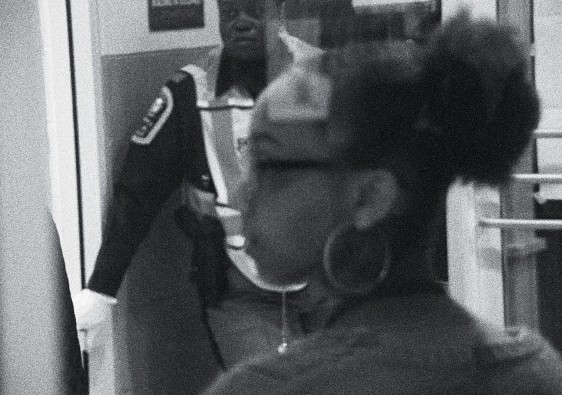
Exhibition: Tonsler Park
Artist: Kevin Jerome Everson
Where: Index – The Swedish Contemporary Art Foundation, Kungsbrostrand 19
When: Till 4 March
A film by American artist and filmmaker Kevin Jerome Everson, Tonsler Park is shot on 16mm black-and-white film over the course of the American election day in 2016, in Charlottesville, Virginia; following the poll workers as they carry out the practical tasks that allow citizens to cast a ballot and vote.
Not documentary or narrative in a traditional sense, it does rely on the conditions and gestures that make up the rituals of democracy. It opens with the oath of allegiance “to prevent fraud, deceit and abuse” and the mainly Black American workers go through repetitive actions as people come in and out of view.
Through Everson’s lens, we take part in that election day as it sheds new light on the current political situation; emphasising the contradictions and struggles that continue to exist throughout Western democracies, and the deep-set socio-political divides that shape the contemporary commons.
Photo and information credits: The respective galleries
